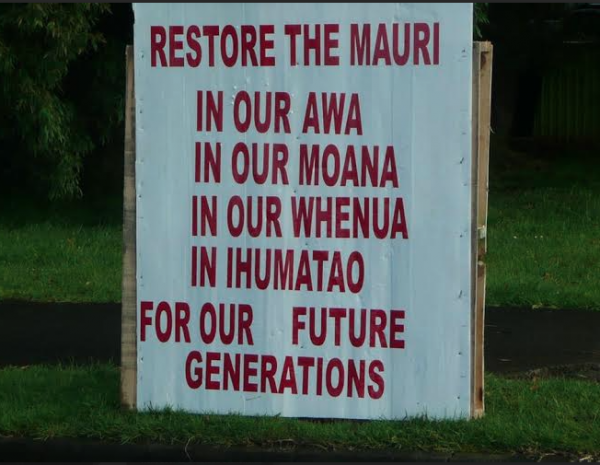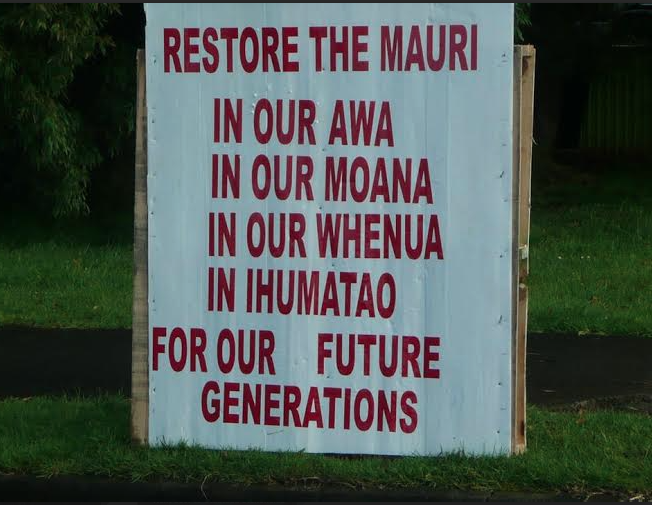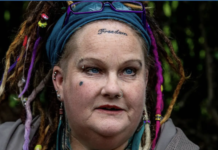
Effects on Māori communities — including mana whenua of Ihumātao — from land confiscation were far reaching and devastating, and are now finally well-documented in New Zealand histories. But in 2016 colonialism is still alive and well in South Auckland. Special Housing Area 62 (SHA62) at Ihumātao is the latest in a series of land-grabs at Ihumatāo dating back over 150 years, once again conducted with the full support of the Crown. Now Auckland Council is unashamedly supporting and facilitating this morally unjustifiable proposal, too. Who is really behind this, and who is benefiting? As we demonstrate, just follow the money to find out!
Save Our Unique Landscape (SOUL) Campaign is led by a group of whānau residents in Ihumātao. We believe that having a Special Housing Area (SHA) in Ihumātao will not contribute to making Auckland a liveable city, but destroy one of the few significant and unique historical, cultural, spiritual, social and environmental spaces we have left. Our movement has continued to grow and, after a year of campaigning, educating, and making submissions, the community is engaging in the first of a series of actions to “Make a Stand for the Land” that will visually and physically place the community front and foremost when it comes to making decisions about the future of this land.
Why we need to make a stand for the land
This is sacred land for Māori, and an important archaeological site for Auckland’s earliest European and Māori settlement and farming. The proposed development site lies between Ihumātao pa village and the mana whenua’s sacred mountain, Te Puketapapatanga a Hape. Hape was the Tainui canoe’s Tohunga, a very important figure in Māori history and ancestor to the mana whenua at Ihumātao. SHA62 is also known to be the resting place for ancestors buried in unique lava caves (urupā). SOUL finds that Fletcher Residential has failed to provide evidence that houses will not be built over the extensive network of urupā . SOUL believes that the development will also destroy other sites of rare archaeological value.
Ihumātao is the key to an international migration picture
New Zealand is the last major piece of land on the planet colonised by humans. Our islands are the end point of roughly 100,000 years of human expansion. In most parts of the world this settlement took place millennia ago; in Aotearoa it is only a few hundred years. Ihumātao is one of the first places the East Polynesian colonists settled. Respected archaeologist David Veart submitted to Council against SHA62, noting: “Radiocarbon dates from this part of Auckland are among the earliest in the country; Ihumātao is one of the first places cleared for gardening in New Zealand. This means the record of the actions of the first people on the last piece of the planet to be settled, is held in this site. This is something too important to be destroyed.”
A dispossessed people
The entire Ihumātao area is a cultural landscape embedded with identity, meaning and significance and must be protected. After 150 years of ongoing desecration, colonisation, dislocation and misappropriation, the mana whenua Te Waiohua are now almost completely landless. Following the confiscation of the 1100 acres of land at Ihumātao, which includes the project site area, Te Waiohua are now left with 1.5 acres of Maori Reservation Land at Makaurau Marae. The historic first Waitangi Tribunal report on the Manukau Harbour was heard at Makaurau Marae in 1985. At that time the Tribunal commented, “We are frankly appalled by the events of the past and by the effect they have had on the Manukau tribes.” Many of the recommendations of that Tribunal report are still to be implemented.
SHA: A contemporary land grab?
The SHA law actually precludes usual consultation and renders the RMA toothless, all to “speed up housing supply.” The Housing Accords and Special Housing Areas Act (HASHAA) legislation was developed under budget secrecy rules with no consultation with any affected parties outside the National Government. It was passed under urgency. The SHA62 development will undermine the guardianship or kaitiaki role of the Ihumātao residents in relation to the land. The land in question was wrongfully confiscated in 1863 as punishment for the involvement of local iwi in the Kīngitanga movement of their Tainui whanaunga.
The Land Wars
The Māori King Movement or Kīngitanga arose among several Māori tribes in the central North Island in the 1850s to establish a role similar in status to that of the monarch of the British colonists. The purpose was to halt the alienation and further sale of Māori land. However, the Crown was not satisfied with the massive acquisitions it had already made and used this assertion of Māori mana as a prelude to warfare. The Crown set its sights on the rich volcanic lands of South Auckland, Waikato and beyond. The injustice, bloodshed and violence of the founding of our agricultural nation is still minimised. But few, with the exclusion of John Key, would dare to claim this country was settled peacefully.
The peace and mutual dependence of early settler Pākehā and Māori communities in Māngere came to an abrupt end when increasing tension over access to land in the Waikato led to Māori living in the area being forced to take sides. A notice was issued in July 1863 requesting that Māori in Māngere declare their allegiance to Queen Victoria and give up their firearms or leave their communities and return to the Waikato south of Mangatawhiri (Daily Southern Cross 11 July 1863). From that time on, the recorded history of Ihumātao is largely a history of the European farming community. SOUL will not stand back and let ignorance over this area’s history rule decisions today.
This land has never been sold before
After the confiscation, the land at Ihumātao was gifted by the Crown to the newly-arrived Scottish settler, Mr Wallace. No money has ever changed hands for this land. It has remained in the ownership of the Wallace family until the recent conditional sale to Fletcher Construction. Fletcher Construction is now an Australian registered company but its shareholding is totally dominated by US banks. In 2016, Fletcher Construction’s four biggest shareholders are by descending order of holdings, JP Morgan, HSBC, Citicorp and National Nominees (owned by the National Bank of Australia which is owned by JP Morgan, HSBC and Citigroup).
The banks that financed the Land Wars of the 1860s are the same banks that own Fletcher Construction today.
These corporate investors should not continue to profit from the shameful injustices of the politically and financially motivated land-grabs of the 19th century. SOUL can not condone the harvesting of capital from our community for the interests of foreign investors.
Let’s not repeat the injustice of the confiscation and alienation of this land 150 years ago. The same international bankers: Samuel Montagu and Co. (now HSBC), Rothschild (Rothschild and JP Morgan) who financed the 1860s Land Wars at 6% return on capital, are trying to return to Ihumātao as owners of the housing developer, Fletcher Construction, chasing similar or better return on capital. We now have a very real opportunity to give the land back to the real owners, mana whenua. They have waited for 150 years, that is long enough.





